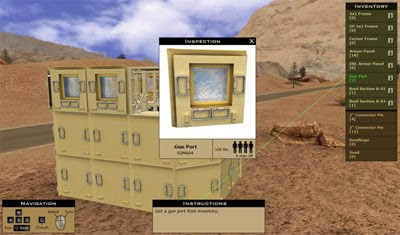The demand, use, and adoption of flight simulators is skyrocketing.
The aviation industry has always been a leader in the use of training simulators, and they continue to push simulators to the forefront of training. A recent BBC New article,
Flight Simulator Development Set to Soar, includes an interview with David Ownes, senior director of flight crew training at Airbus, who predicts the number of full-flight simulators will double in the next 10 to 20 years.
- There are currently 900 full-flight simulators in the world, estimated to double by 2032..
- By 2032, the number of jet airliners will double, to 40,000.
- By 2032, 517,000 new pilots will require training.
"The demand for training seems destined to increase significantly over the next 20 years as air travel grows, and the full-flight simulator is a vital part in the support of this growth."
Globally, as airline travel is predicted to continue to increase over the next 20 years, the aviation industry is forecasting unprecedented growth. Manufacturers that provide training for operators, airlines that have their own training centres, and third-party training facilities all around the world are all scrambling to buy as many simulators as they possibly can at the moment.
Interview with David Ownes, Airbus Senior Director of Flight Crew Training
Crash Shows Need For Simulators
A recent Air France crash, in which an Air Bus A330-200 jetliner plunged from 38,000 feet into the Atlantic Ocean, demonstrates the need for more realistic flight simulators that are capable of simulating the violent nature of aerodynamic stalls. A recent Bloomberg News article,
Air France Crash Shows Need for Realistic Flight Simulators, reports that the FAA may soon require simulators to realistically portray stalls so that pilots experience realistic virtual portrayals of stalls in their training and learn how to react correctly. Simulators have the ability to recreate the surprise and confusion pilots face in real-life situations, a component that is critical to proper training.
South Africa Air Force Helicopter Simulator Cuts Costs
A recent Engineering News article,
Helicopter Simulator to Boost South African Air Force Training While Cutting Costs, reports that Eurocopter recently unveiled the first full flight helicopter simulator in South Africa, a full motion simulator with six degrees of freedom, allowing it to completely reproduce the motions of a Eurocopter AS332 Super Puma helicopter. The simulator will provide valuable training as well as significantly cut the helicopter training costs, since training in the simulator costs approximately 25% of training in a real-world helicopter.
Aviation Growth Equates to Simulator-Based Training Growth
With the surge in growth of the aviation industry, the simualtor-training industry is set to follow in close succession. If, as expected, the number of jetliners swells to 40,000 by 2032, the there will be a need for about 517,000 new pilots in the next 20 years, and flight simulators will provide a considerable amount of the training they will require. Flight simulators allow pilots to train on a more frequent basis and for more specific maneuvers and emergency procedures, training that is essential when it comes to aviation safety. With the average flight simulator costing $25 million USD to purchase, and another $1 Million to maintain anually, it's estimated that the flight simulator market will be worth at least $25 billion USD over the next 20 years.




